
views
How to Perfect Your Form

Bend your hips forward and swing your arms down. To begin, stand up straight with your arms extended by your ears. Then, sit back, like you're going to lean back in a chair. As you do this, swing your arms down and back behind you. Your knees should be directly over your feet, not positioned in front of your feet, or you won't generate enough momentum to land on your hands. EXPERT TIP If you're not sure that you're ready, you should always start with a spotter, practice on a trampoline, or try it into a soft pit. Rosalind Lutsky Rosalind Lutsky Former Gymnastics Coach Rosalind Lutsky worked as a gymnastics coach at SB Gymnastics at Stanford University, coaching children from ages 5-12 years old during her time as a Stanford student. She was a competitive gymnast growing up, and competed for her local gymnastics team in Minnesota. Rosalind Lutsky Rosalind LutskyFormer Gymnastics Coach

Push through your toes and lift your arms up. Swing your arms forward until they reach over your head. Follow your hands with your eyes. At the same time, push through your toes to gain momentum and launch your body backward. Keep your legs together and your core muscles tight.

Continue to fall backwards without arching your back too much. Arching your back too much is called undercutting and will not only make your back handspring look less pretty, but it could also injure your back. As you fall, let your legs continue to drive you upward and backward. Point your toes and extend through your ankles. Make sure you keep your head back between your arms as they approach the floor.
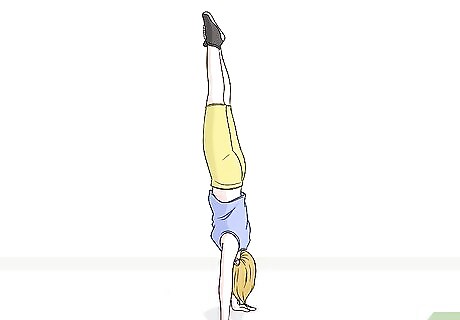
Plant your hands on the floor. Reach for the floor as you fall backwards and make sure to keep your body arched. Keep your arms straight so you don't hit your head on the floor. Your fingers should be pointing up and away from your face with your palms flat on the ground. Let the momentum of your legs, with your lower body still following, carry you over. When your hands are planted on the floor, use the pads of your hands and fingers, your arms, and your shoulders for support. Don't put all of your weight and pressure on your hands. EXPERT TIP Rosalind Lutsky Rosalind Lutsky Former Gymnastics Coach Rosalind Lutsky worked as a gymnastics coach at SB Gymnastics at Stanford University, coaching children from ages 5-12 years old during her time as a Stanford student. She was a competitive gymnast growing up, and competed for her local gymnastics team in Minnesota. Rosalind Lutsky Rosalind Lutsky Former Gymnastics Coach This is where your handstand form really comes into play. Rosalind Lutsky, former gymnastics coach, adds: “Before working on a backhandspring, make sure you've perfected your handstand, along with other basic moves that help you develop core and arm strength.”
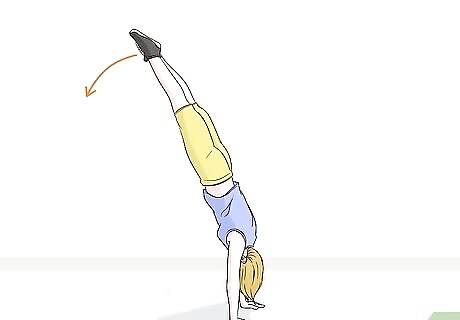
Swing your legs over your head. Snap your legs over your head and around to the floor, with your feet together and your toes pointed. Don't lock your knees, but keep your legs almost straight. Keep your shoulders in line with your hands. EXPERT TIP Rosalind Lutsky Rosalind Lutsky Former Gymnastics Coach Rosalind Lutsky worked as a gymnastics coach at SB Gymnastics at Stanford University, coaching children from ages 5-12 years old during her time as a Stanford student. She was a competitive gymnast growing up, and competed for her local gymnastics team in Minnesota. Rosalind Lutsky Rosalind Lutsky Former Gymnastics Coach Rosalind Lutsky, former gymnastics coach, adds: “After your hands hit the ground, you want to push off and get your chest up, to help you stick the landing. It can be useful to practice that last part by going into a handstand and trying to push yourself off the ground and land on two feet."
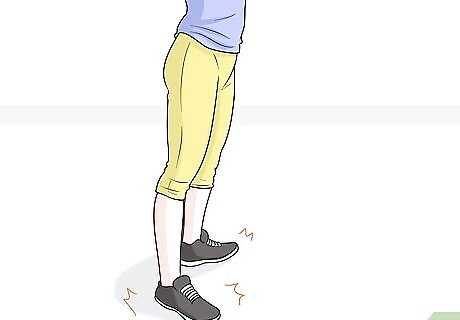
Plant your feet on the floor. Continue by swinging your legs and feet over and snapping them down firmly toward the floor. Keep your upper body straight as your toes approach the floor.
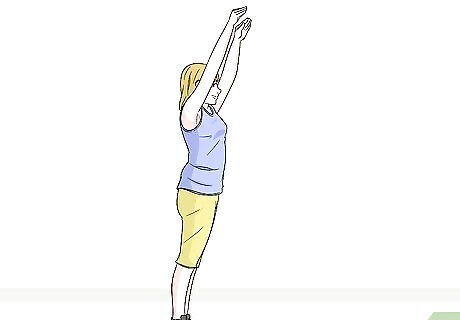
Pop up. To finish the back handspring, land with your legs slightly bent and pop up to release your momentum. Bring your arms straight in front of you and then raise them up over your head. Don't be discouraged if you don't get it right immediately. Work with a spotter until you feel comfortable enough to do it on your own. With enough hard work, you'll have a neat and smoothly-executed back handspring in no time.
How to Warm up and Stretch
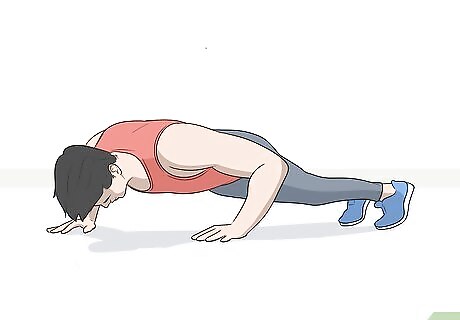
Warm up. You shouldn’t attempt a back handspring without warming up, as it makes you more likely to get hurt. Jog a few laps around the gym or track to get your blood flowing. You can also jump rope for a couple minutes, or do jumping jacks, lunges, or push ups.
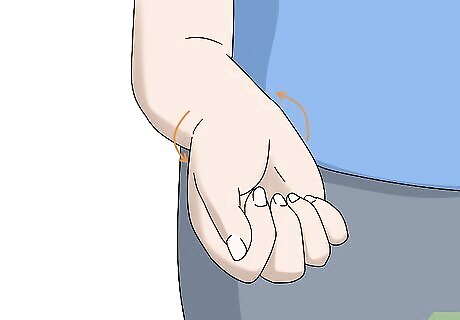
Stretch your wrists and ankles. Roll your wrists and ankles clockwise and counterclockwise five times each. Practice pointing and flexing your feet ten times each. To stretch your wrists, get on your knees and place your hands on the ground palms-down, with the fingers pointed at you. Then, pull back on your arms to feel a deep stretch in your wrists. To stretch your ankles, sit on a chair and put an exercise band or jump rope around one foot. Pull on the band with your hands and push against the force with your ankle. Repeat with the other foot.
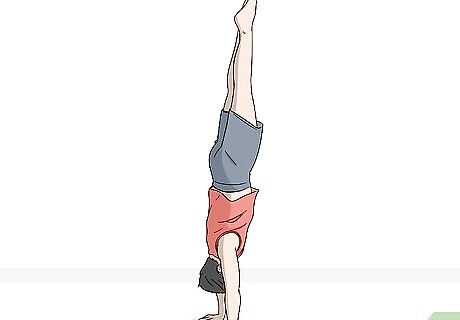
Practice your handstands. Begin by standing straight up with your arms over your head. Let your body fall forward and place your palms firmly on the ground. Kick one leg up and allow the other leg to follow naturally. Tighten your core and buttock muscles to keep yourself in the upright position. Try walking on your hands to build your strength. Put your hands on the ground parallel to each other about 1.5 feet (0.46 m) in front of your chest and walk your legs backward up a solid wall or door. Then practice moving your hands left to right and right to left. Keep your core tight and your head down.

Do a backbend. Start by standing up straight with your legs shoulder-width apart and your arms extended by your ears. Look up at the ceiling, point your fingers, and push your hips forward. Slowly bend backward, keeping your arms locked. Plant your hands firmly on the ground and keep your feet in place. Lower yourself slowly to the ground after holding the backbend for 15-30 seconds. If you're a beginner, practice on a wall. Tighten your core, tuck your head in, and place your hands behind you on a wall. Walk your hands up and down the wall until you feel comfortable with the movement.
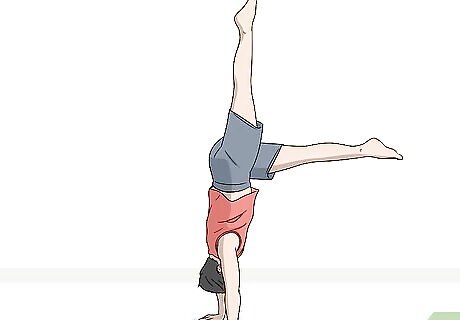
Do a back walkover. Once you’re comfortable doing a backbend, practice doing a walkover. When you’re fully in the backbend position, lift one leg off the ground and point your toes. Swing that leg around toward your head and push your other leg off the ground and allow it to follow naturally. Practice doing kicks on each leg from a bridge position until you can fully kick both legs over.
How to Get Comfortable with the Movements
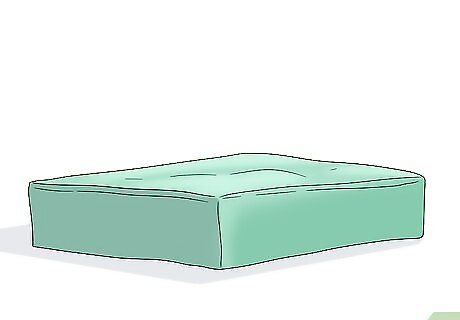
Use a soft mat. To get comfortable going backwards you should use a soft surface to prevent injury of any kind. Find a cushy, soft mat and practice jumping backwards onto it. Swing your arms back the same way you would when doing a back handspring to get comfortable with the movements.
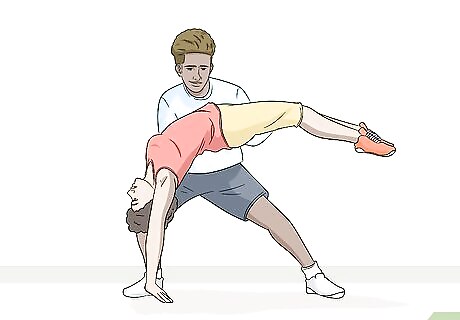
Get a spotter. Make sure that when you try to do a back handspring for the first time, you have a spotter, like a coach or gymnastics teacher, to help you. This will prevent you from hurting yourself and will give you the confidence you need to successfully do the back handspring. The spotter should place one hand on your lower back and one hand under your thighs to help you flip backwards. Make sure your spotter can sustain your weight and that they know how to properly spot.
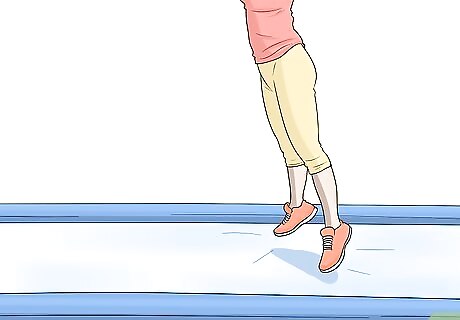
Try your back handspring on a trampoline. If you're not feeling confident about backwards movements, or you're a beginner to this move, start off on a trampoline. This way, you can gain your confidence until you're ready to go and do it on a harder surface like grass without the risk of injury.














Comments
0 comment